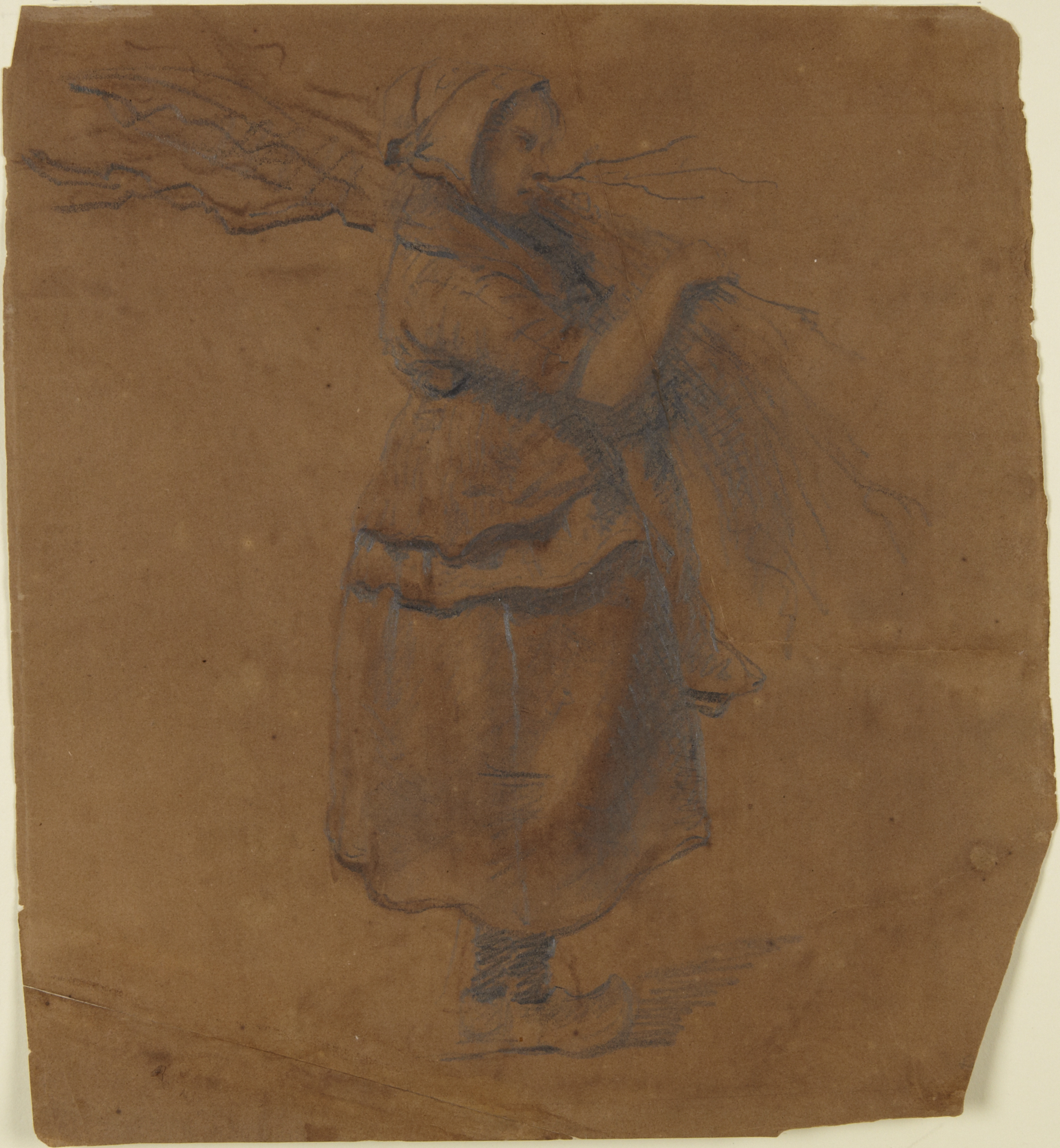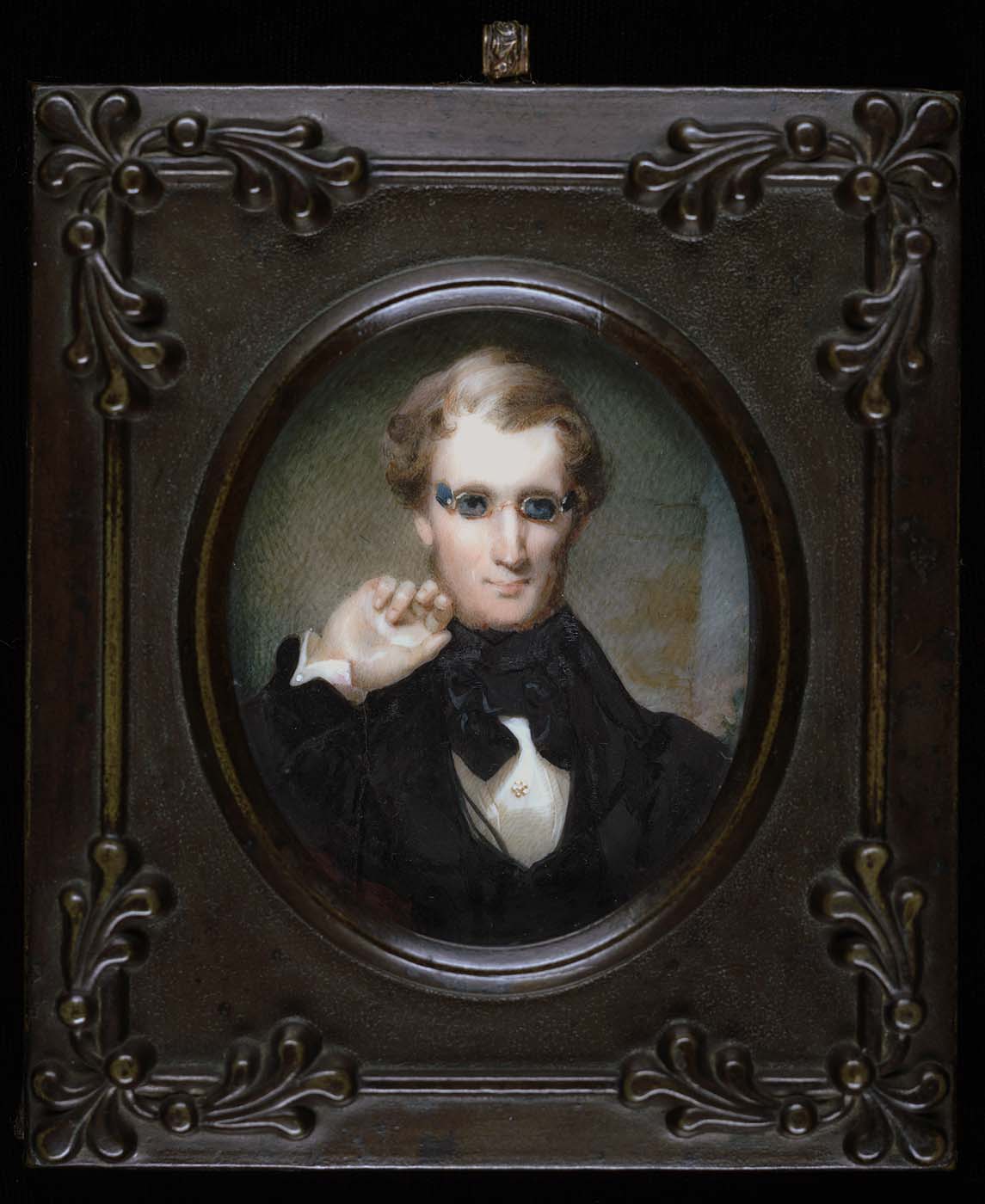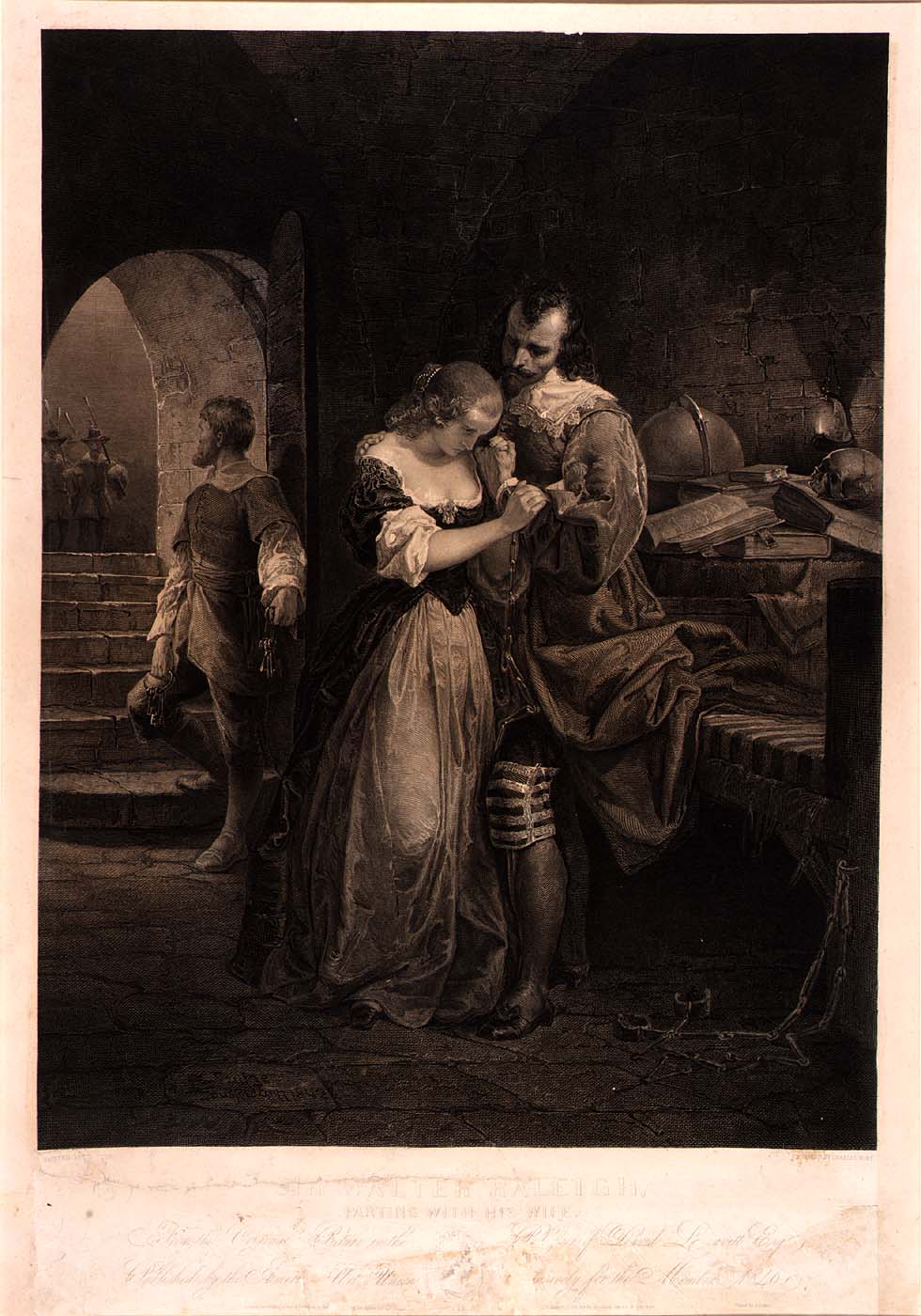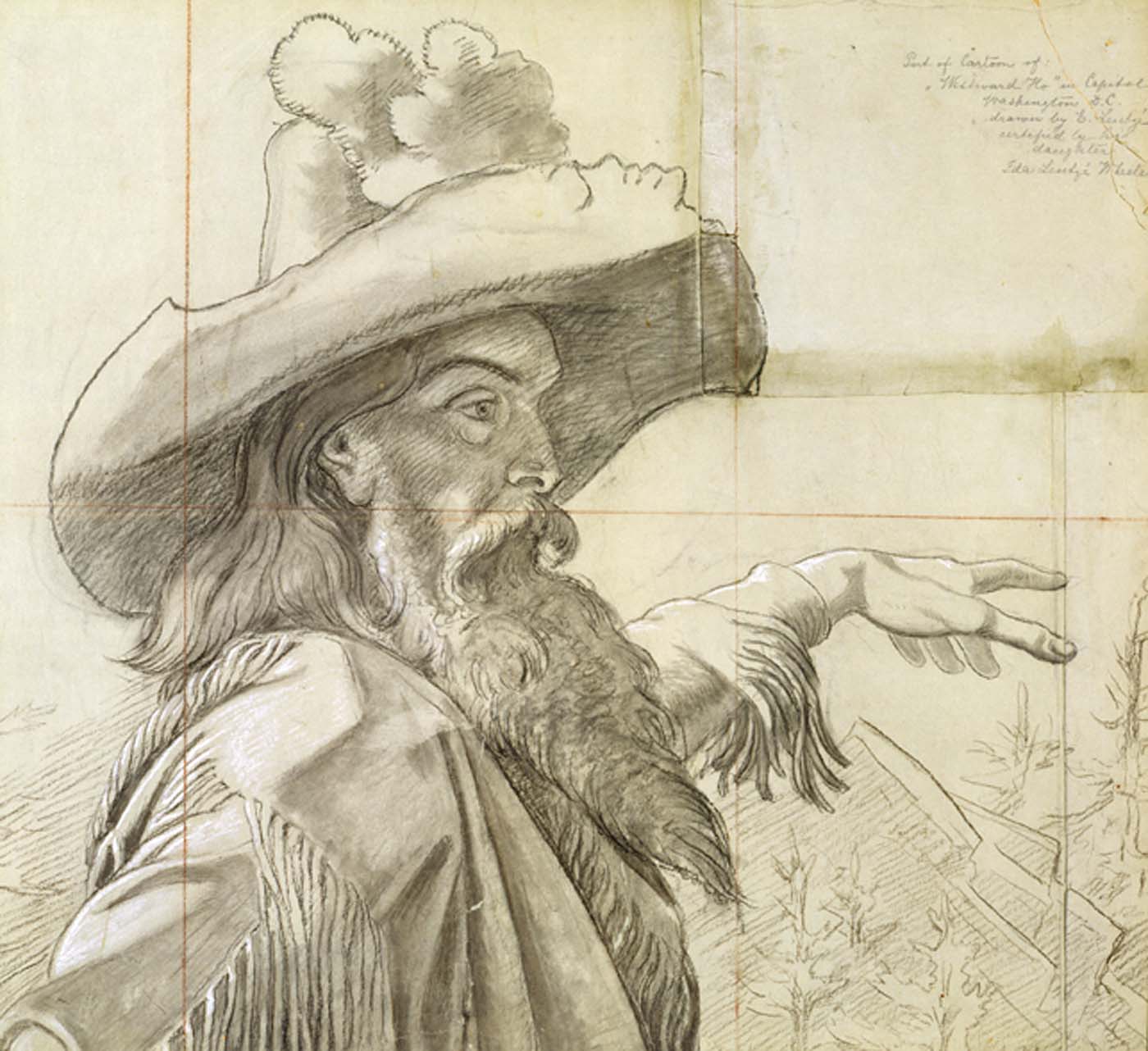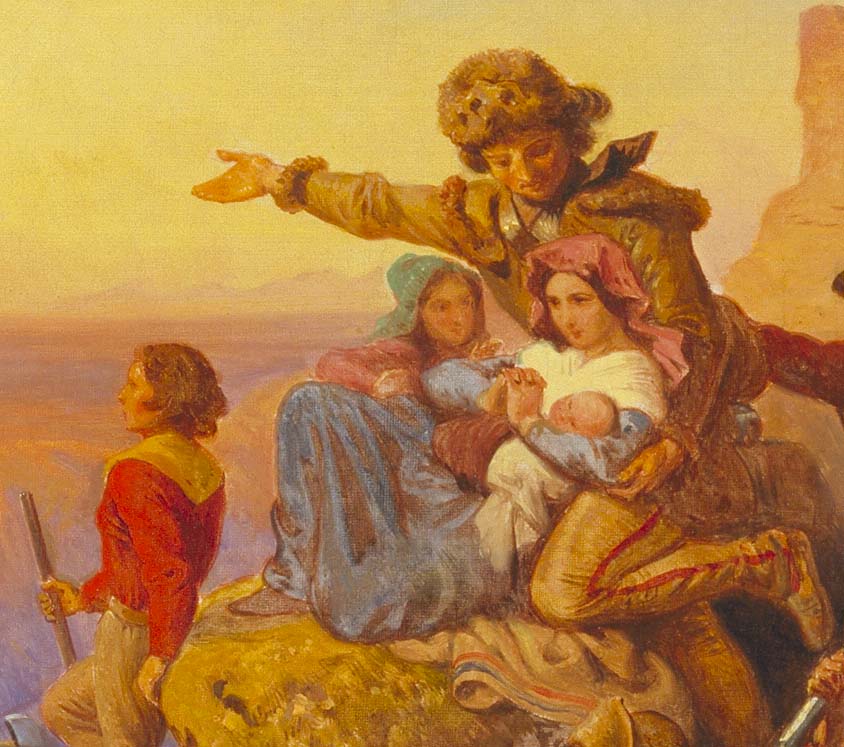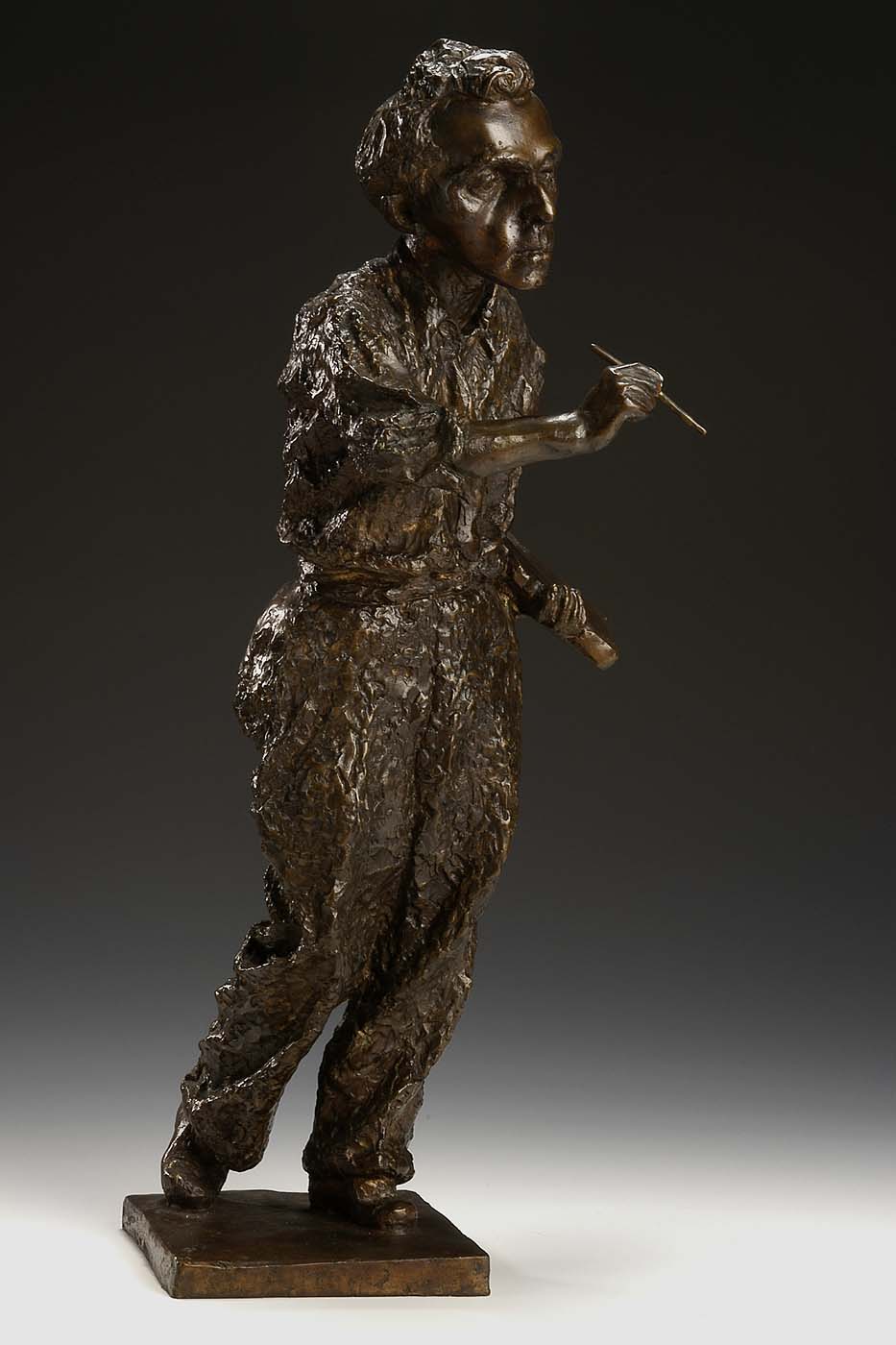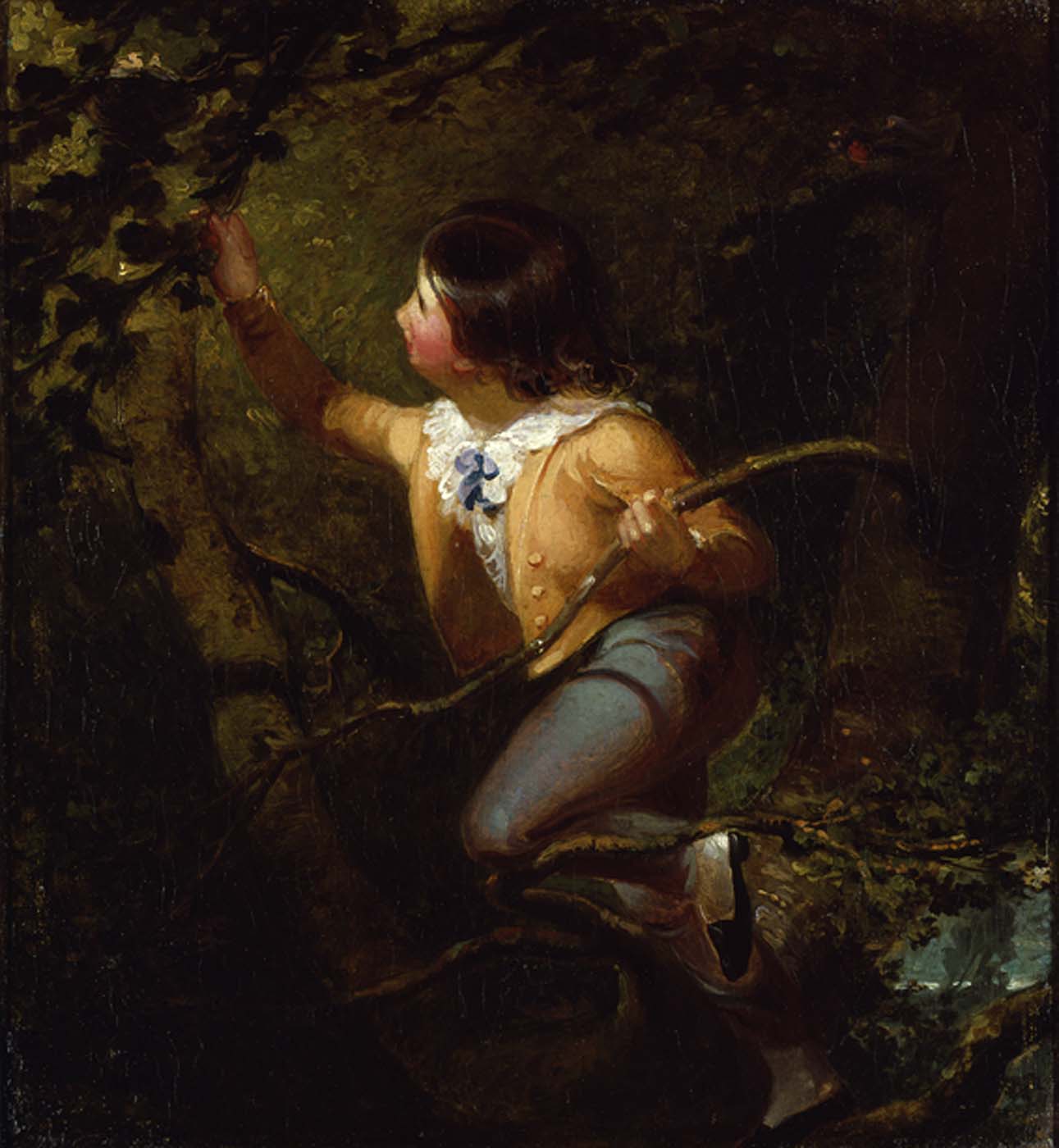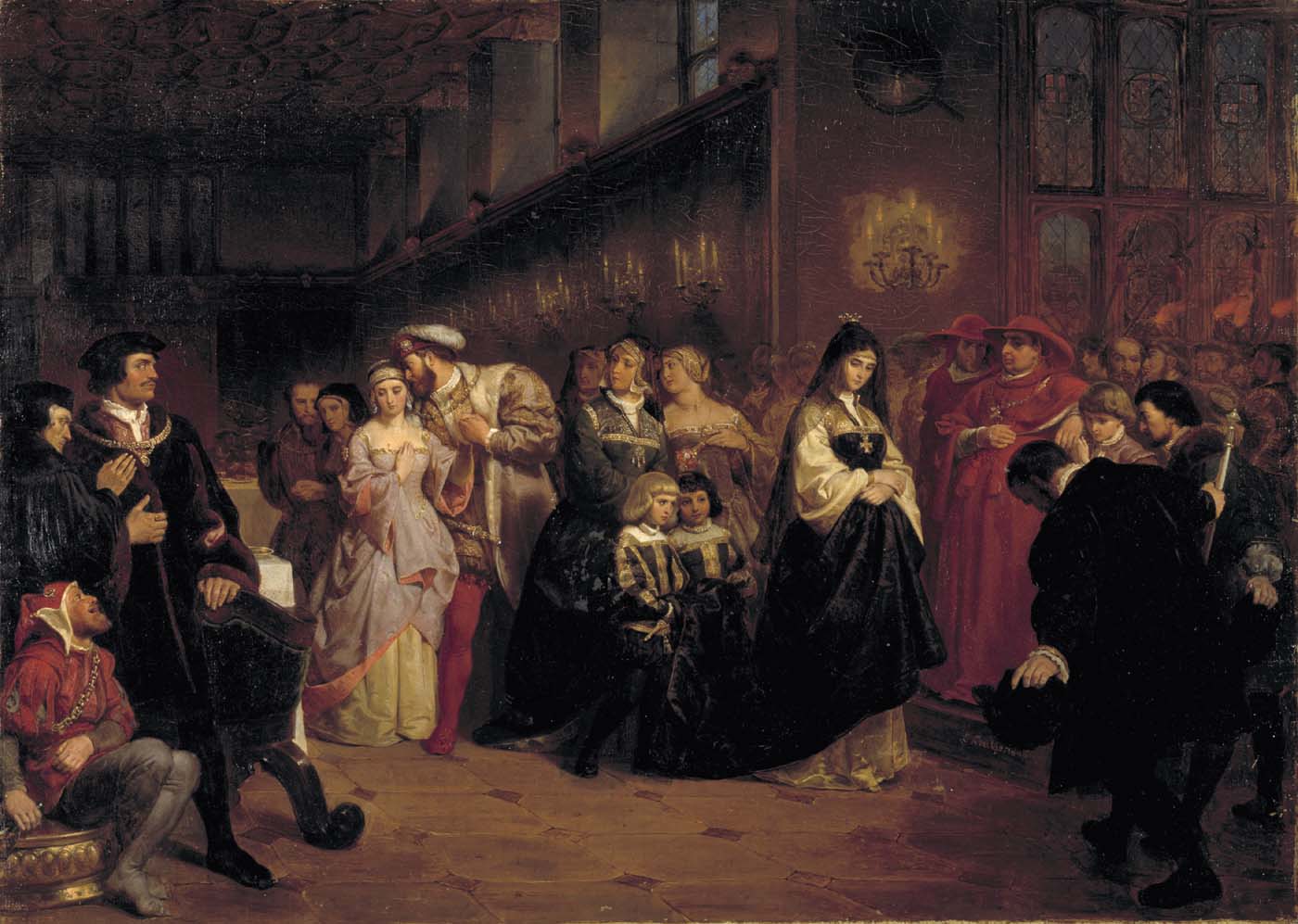Emanuel Gottlieb Leutze
Born 24 May 1816, Schwäbisch-Gmünd, near Stuttgart, Germany. 1825, emigrated with family to Philadelphia. 1834, studied drawing from casts and portraiture with John Rubens Smith. 1836, commissioned by Longacre and Herring to paint portraits for a National Portrait Gallery of Distinguished Americans in Washington, D.C.; project cancelled due to financial crisis of 1837. 1837–39, itinerant portraitist in Virginia, Maryland, Pennsylvania. 1839, settled in Philadelphia; began painting literary subjects.
1841, Philadelphia patrons sent him to Düsseldorf to study at the academy; specialized in historical subjects. Left Düsseldorf1843, dissatisfied with conservatism; traveled to Italy. Returned to Düsseldorf in 1845 to marry Juliane Lottner. Associated with founding of Malkasten, a dissident artists' group, which pressed for political unification of German states. 1849, due to political ties, forced to resign from Union of Düsseldorf Artists for Mutual Aid and Support; began work on Washington Crossing the Delaware, which was damaged in an 1850 studio fire. January 1851, began work on second version, which was exhibited in New York and Washington to acclaim.
1852, petitioned Congress to commission replica of the painting, together with pendant, Washington Rallying the Troops at Monmouth; completed 1854. Traveled to southern Germany to help organize pan-Germanic congress of artists. 1859, returned to U.S. 1860, elected member, National Academy of Design. 1861, commissioned to paint mural, Westward the Course of Empire, [mural study, SAAM, 1931.6.1] in U.S. Capitol; completed 1862. 1863, returned to Düsseldorf to bring family to U.S.
William Kloss Treasures from the National Museum of American Art (Washington, D.C. and London: National Museum of American Art with the Smithsonian Institution Press, 1985)


